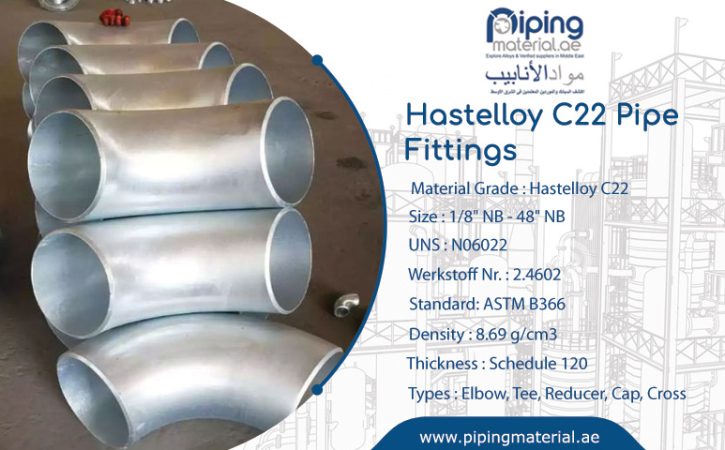
Introduction:
Hastelloy, a family of nickel-based alloys renowned for their exceptional corrosion resistance and high strength, has revolutionized the industrial sector. Its outstanding properties make it an ideal choice for critical applications, particularly in environments where corrosion, heat, and chemical exposure pose significant challenges. In this bog, we delve into the world of Hastelloy pipe fittings and Hastelloy round bars, exploring their characteristics, applications, and benefits.
When it comes to demanding industrial applications that involve highly corrosive environments, Hastelloy pipe fittings are widely regarded as a top choice. Hastelloy is a group of nickel-based alloys known for their exceptional resistance to corrosion, high temperature capabilities, and excellent strength. These qualities make Hastelloy pipe fittings indispensable in various industries, including chemical processing, oil and gas, pharmaceuticals, and more.
One of the key advantages of Hastelloy Pipe Fittings is their outstanding resistance to a wide range of corrosive substances. These fittings can withstand attack from acids, alkalis, chlorides, sulfides, and other aggressive media that can rapidly degrade ordinary materials. Whether it’s hydrochloric acid, sulfuric acid, or even seawater, Hastelloy pipe fittings offer unparalleled protection against corrosion, minimizing the risk of leaks, failures, and costly downtime.
- Understanding Hastelloy: 1.1 Overview of Hastelloy Alloys: Learn about the different grades of Hastelloy alloys and their compositions, including Hastelloy C276, Hastelloy C22, Hastelloy B2, and others. 1.2 Unique Properties: Explore the exceptional corrosion resistance, high-temperature strength, and oxidation resistance exhibited by Hastelloy alloys, setting them apart from other materials.
- Hastelloy Pipe Fittings: 2.1 Types of Hastelloy Pipe Fittings: Discover the various types of pipe fittings available, such as elbows, tees, reducers, and couplings, all manufactured using Hastelloy alloys. 2.2 Advantages of Hastelloy Pipe Fittings: Explore the benefits of Hastelloy pipe fittings, including their resistance to pitting, crevice corrosion, and stress corrosion cracking, making them suitable for aggressive environments. 2.3 Applications: Learn about the diverse applications of Hastelloy pipe fittings across industries such as chemical processing, oil and gas, pharmaceuticals, and more.
- Hastelloy Round Bars: 3.1 Characteristics: Understand the unique characteristics of Hastelloy round bars, such as their exceptional mechanical properties, resistance to thermal fatigue, and elevated temperature stability. 3.2 Versatility and Applications: Explore the versatile applications of Hastelloy round bars, including their use in aerospace, marine, chemical, and nuclear industries. 3.3 Machinability and Fabrication: Discover the machinability and fabrication techniques employed for Hastelloy round bars, ensuring their seamless integration into various projects.
- Maintenance and Considerations: 4.1 Corrosion Prevention: Learn about maintenance practices to enhance the longevity of Hastelloy Round Bar and round bars, including proper cleaning, inspection, and protective coatings. 4.2 Welding and Joining: Understand the welding techniques used for Hastelloy alloys, along with considerations for joint design and filler material selection. 4.3 Safety Guidelines: Highlight the importance of following safety protocols when working with Hastelloy materials, including personal protective equipment (PPE) and handling precautions.
Conclusion:
Hastelloy pipe fittings and Hastelloy round bars continue to redefine standards in the field of industrial materials. Their remarkable corrosion resistance, high strength, and versatility make them indispensable in demanding environments. By understanding their properties, applications, and maintenance requirements, engineers and professionals can harness the power of Hastelloy alloys to overcome challenges and achieve optimal performance in critical operations.
- SHARES








